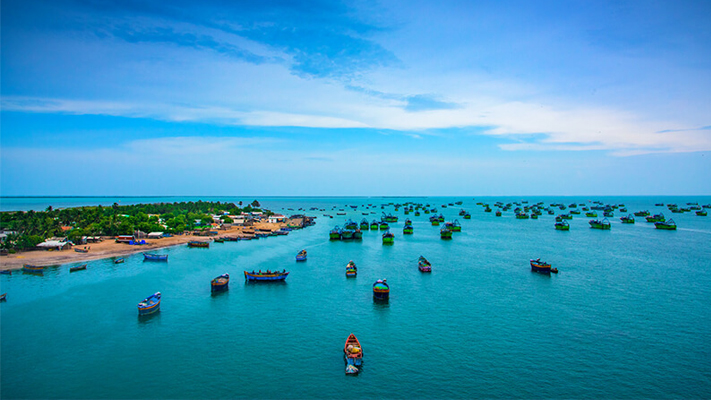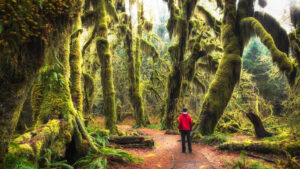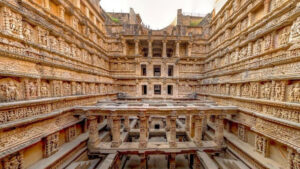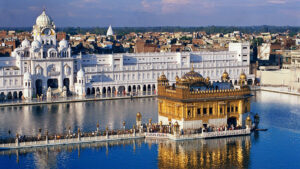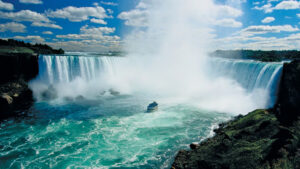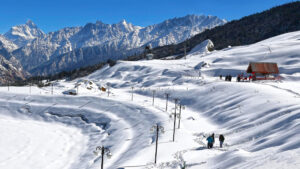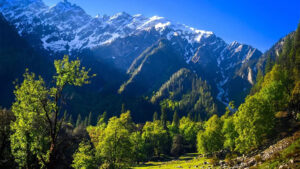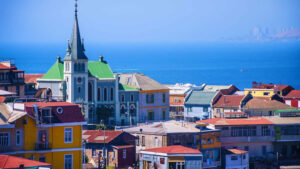10 BEAUTIFUL ISLANDS IN INDIA FOR THE PERFECT GETAWAY – UNWIND IN NATURE’S EMBRACE

India is blessed with an abundance of breathtaking islands that offer a perfect escape for those seeking tranquility, natural beauty, and a break from the hustle and bustle of everyday life. From the turquoise waters and sandy beaches of the Andaman Islands to the untouched paradise of Lakshadweep, these islands provide an enchanting retreat for travelers. With their pristine landscapes, vibrant marine life, and a blend of cultural heritage, these islands offer an opportunity to unwind, reconnect with nature, and immerse oneself in the serenity of island life. Whether you’re in search of adventure, relaxation, or simply a slice of paradise, the beautiful islands of India beckon with their alluring charm, promising an unforgettable escape like no other.

1. Andaman Islands
The Andaman Islands, a group of stunning tropical islands located in the Bay of Bengal, are a sought-after destination for travelers from around the world. Here are some reasons that make the Andaman Islands popular with tourists:
1. Pristine Beaches: The Andaman Islands boast pristine beaches with soft white sands, crystal-clear turquoise waters, and palm-fringed coastlines. From the famous Radhanagar Beach to the secluded beaches of Neil Island and Havelock Island, these beaches provide idyllic settings for sunbathing, swimming, and water sports.
2. Breathtaking Marine Life: The Andaman Islands are renowned for their incredible marine biodiversity. The surrounding coral reefs are home to vibrant coral gardens, tropical fish, and fascinating marine creatures, including turtles, manta rays, and even dolphins. Snorkeling and scuba diving enthusiasts can explore the underwater world and witness this mesmerizing marine life.
3. Cellular Jail: Located in Port Blair, the Cellular Jail is a historic landmark that serves as a reminder of India’s struggle for independence. Also known as “Kala Pani,” it offers a glimpse into the dark chapters of India’s history and is a significant attraction for history enthusiasts.
4. Island Hopping: The Andaman Islands consist of numerous islands, each with its own unique charm. Travelers can indulge in island hopping, exploring destinations like Neil Island, Havelock Island, Baratang Island, and Ross Island, discovering their distinct landscapes, cultures, and attractions.
5. Volcano Creek: Located in Baratang Island, Volcano Creek is known for its unique phenomenon called the “mud volcano.” Visitors can witness the mud bubbles and geysers created by the underground gases, making it a fascinating natural wonder.
2. Lakshadweep Islands
The Lakshadweep Islands, located off the southwestern coast of India in the Arabian Sea, are a captivating archipelago known for their untouched beauty and serene atmosphere. Here is an overview of the Lakshadweep Islands and what makes them a unique destination:
1. Pristine Beaches: The Lakshadweep Islands are renowned for their pristine, unspoiled beaches with powdery white sands and clear turquoise waters. The beaches offer a sense of seclusion and tranquility, allowing visitors to unwind and relax in a truly serene environment.
2. Coral Reefs and Marine Life: The coral reefs surrounding the Lakshadweep Islands are a major attraction for divers and snorkelers. The vibrant coral gardens are teeming with a rich diversity of marine life, including colorful fish, sea turtles, rays, and even dolphins. Exploring the underwater world is a breathtaking experience.
3. Marine National Park: The Lakshadweep Islands are home to India’s only coral reef-formed Marine National Park. Spread across an area of approximately 4200 square kilometers, it offers a unique ecosystem and serves as a protected area for marine life conservation.
4. Lagoons and Atolls: The Lakshadweep Islands consist of 36 islands, which include coral atolls and beautiful lagoons. These lagoons provide a stunning backdrop for leisurely boat rides, fishing excursions, and exploring the unique ecology of the islands.
5. Offbeat Destination: Compared to other popular beach destinations in India, the Lakshadweep Islands remain relatively undiscovered and less crowded. This makes it an ideal choice for travelers seeking a peaceful and off-the-beaten-path destination.
3. Havelock Island
Havelock Island, one of the most popular islands in the Andaman and Nicobar archipelago, is a tropical paradise known for its pristine beaches, crystal-clear waters, and lush green landscapes. Here’s an overview of Havelock Island and what makes it a captivating destination:
1. Radhanagar Beach: Havelock Island is renowned for its breathtaking Radhanagar Beach, often ranked as one of the best beaches in Asia. With its powdery white sands, turquoise waters, and stunning sunsets, it offers an idyllic setting for relaxation, sunbathing, and beachside walks.
2. Scuba Diving and Snorkeling: The clear waters surrounding Havelock Island are a haven for underwater enthusiasts. The coral reefs teem with vibrant marine life, making it an excellent destination for scuba diving and snorkeling. Experienced divers can explore fascinating dive sites like Elephant Beach and experience the wonders of the underwater world.
3. Elephant Beach: Located on Havelock Island, Elephant Beach is known for its colorful coral reefs and abundant marine life. Visitors can take a boat ride or hike through the lush jungle to reach this picturesque beach, where they can enjoy snorkeling, kayaking, and swimming in the azure waters.
4. Kalapathar Beach: Situated on the eastern side of Havelock Island, Kalapathar Beach offers a serene and secluded escape. The beach is characterized by its rocky shoreline, lined with black stones, and offers a peaceful ambiance amidst the natural beauty of the island.
5. Sustainable Tourism: Havelock Island is committed to sustainable tourism practices. Several eco-friendly initiatives are in place to protect the environment and marine ecosystems, ensuring the island’s beauty is preserved for future generations.

4. Neil Island
Neil Island, located in the Andaman and Nicobar Islands of India, is a tranquil and picturesque destination that offers a serene escape from the bustling world. Here’s an overview of Neil Island and what makes it a captivating destination:
1. Serene Beaches: Neil Island is known for its serene and uncrowded beaches, offering a peaceful and relaxing atmosphere. The beaches, such as Bharatpur Beach, Laxmanpur Beach, and Sitapur Beach, are characterized by their pristine sands, clear turquoise waters, and stunning sunsets.
2. Coral Reefs and Snorkeling: The waters surrounding Neil Island are home to vibrant coral reefs and a diverse array of marine life. Snorkeling is a popular activity, allowing visitors to explore the underwater world and witness the colorful coral formations and tropical fish.
3. Natural Bridge: One of the main attractions of Neil Island is the Natural Bridge, a unique rock formation created by the forces of nature. It is a picturesque spot that offers breathtaking views and a great opportunity for photography.
4. Cycling and Exploring: Neil Island is small and can be easily explored on foot or by renting a bicycle. Cycling through the quaint villages, lush paddy fields, and coconut plantations is a delightful way to discover the island’s charm at a leisurely pace.
5. Sunrise and Sunset Views: Neil Island offers breathtaking views of both sunrise and sunset. Head to viewpoints like the Sunset Point or Natural Bridge to witness the stunning colors painting the sky as the sun rises or sets over the horizon.
5. Diu Island
Diu Island, located off the coast of Gujarat in western India, is a captivating destination known for its rich history, stunning beaches, and a blend of Indian and Portuguese influences. Here’s an overview of Diu Island and what makes it a fascinating place to visit:
1. Historical Significance: Diu Island has a rich historical legacy. It was a Portuguese colony for over 450 years, and remnants of their presence can still be seen in the form of forts, churches, and colonial architecture. The imposing Diu Fort, St. Paul’s Church, and the Portuguese-style buildings in the Old Town are notable landmarks.
2. Pristine Beaches: Diu Island boasts beautiful, uncrowded beaches with soft golden sands and clear blue waters. Nagoa Beach, Ghoghla Beach, and Jallandhar Beach are among the popular ones. Visitors can relax on the shores, indulge in water sports, or simply soak up the sun’s rays.
3. Seafood and Culinary Delights: Diu Island is renowned for its delectable seafood. Visitors can savor fresh catches of fish, prawns, crabs, and lobsters prepared in local and international styles. The island also offers a range of culinary delights, including traditional Gujarati dishes and Portuguese-inspired cuisine.
4. Relaxing Atmosphere: Diu Island has a laid-back and relaxed ambiance, making it an ideal place for a peaceful getaway. The island’s unhurried pace, friendly locals, and serene surroundings create an atmosphere that encourages relaxation and rejuvenation.
5. Sunset Views: Diu Island offers breathtaking sunset views, especially from places like Sunset Point and Naida Caves. Watching the sun descend into the Arabian Sea and painting the sky with vibrant colors is a magical experience.
6. Majuli Island
Majuli Island, located in the Brahmaputra River in the northeastern state of Assam, India, is a unique and enchanting destination. Here’s an overview of Majuli Island and what makes it a captivating place to visit:
1. Cultural Heritage: Majuli Island is renowned for its rich cultural heritage. It is the world’s largest river island and has been the cultural and spiritual hub of the Assamese people for centuries. The island is home to various Vaishnavite monasteries called “Satras,” which preserve and promote traditional dance, music, art, and religious practices.
2. Traditional Festivals: Majuli Island comes alive with vibrant festivals celebrated throughout the year. Festivals like Raas Purnima, Ali Ai Ligang, and Majuli Festival showcase traditional dance, music performances, cultural exhibitions, and religious processions, offering visitors a chance to witness the island’s festive spirit and cultural vibrancy.
3. Majuli’s Natural Beauty: Majuli Island is blessed with serene natural beauty. The lush green landscapes, paddy fields, and meandering river channels create a picturesque environment. The island is also a biodiversity hotspot, home to various bird species, including migratory birds, making it a paradise for birdwatching enthusiasts.
4. Majuli’s Satras: The Satras of Majuli Island are not only cultural institutions but also architectural marvels. These monasteries, built in unique Assamese architectural style, house valuable artifacts, manuscripts, and religious relics. Visitors can witness the traditional dance and music performances and gain insights into the spiritual and cultural practices.
5. River Cruises: Exploring Majuli Island by embarking on a river cruise along the Brahmaputra River is a popular activity. Cruises provide an opportunity to witness the island’s stunning landscapes, riverine ecology, and catch glimpses of dolphins and other aquatic life.

7. Elephanta Island
Elephanta Island, located in the Mumbai Harbor of Maharashtra, India, is a captivating destination known for its ancient cave temples and rock-cut sculptures. Here’s an overview of Elephanta Island and what makes it a fascinating place to visit:
1. Ancient Cave Temples: The highlight of Elephanta Island is its collection of remarkable cave temples, designated as a UNESCO World Heritage Site. These intricately carved rock-cut temples date back to the 5th and 8th centuries and showcase exquisite Hindu and Buddhist sculptures and artworks.
2. Shiva Cave: The main attraction of Elephanta Island is the Shiva Cave, also known as the Great Cave or Cave 1. This magnificent cave is dedicated to Lord Shiva and features a massive 20-foot-tall sculpted Trimurti, depicting the three aspects of Lord Shiva—Brahma, Vishnu, and Mahesh (Shiva). The cave also houses various other intricate carvings and panels depicting mythological stories.
3. Rock-Cut Sculptures: The caves of Elephanta Island are adorned with an impressive collection of rock-cut sculptures, depicting gods, goddesses, celestial beings, and various mythological scenes. The craftsmanship and attention to detail in these sculptures are awe-inspiring, offering a glimpse into the rich artistic heritage of ancient India.
4. Island Setting and Views: Elephanta Island’s location in the Mumbai Harbor provides a scenic backdrop for exploration. Visitors can enjoy panoramic views of the city skyline and the Arabian Sea while strolling through the island’s lush greenery and tranquil surroundings.
5. Ferry Ride: Getting to Elephanta Island involves a short ferry ride from Mumbai, adding an element of adventure to the visit. The journey offers beautiful views of the Mumbai coastline and the chance to feel the sea breeze as you approach the island.
6. Sculptural Styles: The sculptures found on Elephanta Island exhibit a mix of influences, including Hindu, Buddhist, and Jain styles. The intricate carvings and iconography showcase the artistic prowess of the craftsmen of that era.
8. St. Mary’s Island
St. Mary’s Island, also known as Coconut Island, is a captivating destination located off the coast of Karnataka, India. Here’s an overview of St. Mary’s Island and what makes it a fascinating place to visit:
1. Geological Marvel: St. Mary’s Island is renowned for its unique geological formations, featuring hexagonal basalt rock columns. These natural rock formations are a result of volcanic activity that occurred millions of years ago, making the island a geological wonder.
2. Pristine Beaches: The island boasts pristine beaches with soft, white sands and clear turquoise waters. Visitors can enjoy leisurely walks along the shores, sunbathe, or simply relax amidst the picturesque surroundings.
3. Basalt Rock Formations: The distinctive basalt rock formations on St. Mary’s Island create a dramatic and visually stunning landscape. The hexagonal columns, formed by the cooling and solidification of lava, offer unique photo opportunities and attract geology enthusiasts.
4. Marine Life: The waters surrounding St. Mary’s Island are rich in marine biodiversity. Snorkeling and scuba diving allow visitors to discover the vibrant coral reefs, swim alongside tropical fish, and witness the island’s underwater wonders.
5. Nature Walks: St. Mary’s Island is a small and tranquil island, perfect for nature walks and exploring its natural beauty. The island’s lush greenery, coastal vegetation, and scenic landscapes provide an opportunity to immerse oneself in the island’s serene environment.
6. Ferry Ride: Getting to St. Mary’s Island involves a short ferry ride from the mainland, adding an element of adventure to the visit. The ferry ride allows visitors to enjoy scenic views of the coastline and the refreshing sea breeze.
9. Great Nicobar Island
Great Nicobar Island, the largest and southernmost island in the Nicobar archipelago of India, is a remote and captivating destination. Here’s an overview of Great Nicobar Island and what makes it a fascinating place to visit:
1. Pristine Natural Beauty: Great Nicobar Island is renowned for its unspoiled and pristine natural beauty. The island is covered with dense tropical rainforests, mangrove forests, and exotic flora, providing a habitat for diverse wildlife species and showcasing the island’s ecological significance.
2. Biosphere Reserve: Great Nicobar Island is home to the Great Nicobar Biosphere Reserve, a UNESCO World Heritage Site. This reserve is a protected area that preserves the island’s unique ecosystems, including its rich biodiversity, endemic species, and fragile habitats.
3. Megapode Birds: The island is famous for its megapode birds, specifically the Nicobar megapode. These unique birds build large mound nests in which they lay their eggs. Watching these birds and their nesting behavior is a popular attraction for birdwatchers and nature enthusiasts.
4. Galathea National Park: Galathea National Park, located on Great Nicobar Island, is a haven for nature lovers. It is home to rare and endangered species such as the Nicobar megapode, saltwater crocodiles, and the Nicobar tree shrew. The park offers opportunities for jungle trekking, wildlife spotting, and exploring the island’s diverse ecosystems.
5. Indira Point: Great Nicobar Island is home to Indira Point, the southernmost point of India. This landmark offers stunning panoramic views of the Indian Ocean and is a significant attraction for visitors.
6. Isolated Beaches: Great Nicobar Island is known for its secluded and pristine beaches. These untouched stretches of sandy shores, such as Campbell Bay Beach and Galathea Beach, provide a serene and tranquil environment for relaxation, beachcombing, and enjoying the beauty of the surrounding nature.

10. Rameshwaram Island
Rameshwaram Island, located in the Gulf of Mannar of Tamil Nadu, India, is a sacred and captivating destination with historical and spiritual significance. Here’s an overview of Rameshwaram Island and what makes it a fascinating place to visit:
1. Spiritual Significance: Rameshwaram Island holds immense religious importance for Hindus. It is believed to be the place where Lord Rama, the mythical hero of the epic Ramayana, built a bridge (referred to as Ram Setu or Adam’s Bridge) to Lanka to rescue his wife Sita. The island is home to the famous Ramanathaswamy Temple, one of the 12 Jyotirlingas (sacred abodes of Lord Shiva), attracting pilgrims from all over India.
2. Ramanathaswamy Temple: The Ramanathaswamy Temple, a grand and ancient Hindu temple, is the main attraction of Rameshwaram Island. The temple’s intricate architecture, towering gopurams (gateways), and sacred tanks (teerthams) are a sight to behold. The temple complex also includes several mandapams (pillared halls) and sanctuaries, offering a glimpse into Dravidian temple architecture.
3. Sacred Tanks and Rituals: Rameshwaram Island is known for its sacred tanks, particularly the Agni Theertham and the 22 holy theerthams within the Ramanathaswamy Temple. Taking a ritual bath in these tanks is considered purifying and auspicious for devotees.
4. Dhanushkodi: Dhanushkodi, located at the eastern tip of Rameshwaram Island, is a significant place associated with the Ramayana. It is believed to be the spot where Lord Rama’s bridge ended. The ruins of a once-thriving town destroyed by a cyclone in 1964 add to the mystical and historical charm of the place.
5. Adam’s Bridge (Ram Setu): Rameshwaram Island is believed to be connected to Sri Lanka by a natural formation of limestone shoals called Adam’s Bridge or Ram Setu. This bridge is of significant cultural and historical importance, attracting curiosity and interest from visitors.
6. Beaches: Rameshwaram Island boasts pristine beaches, such as Agnitheertham Beach and Dhanushkodi Beach. These beaches offer serene and picturesque settings for relaxation, beach walks, and enjoying beautiful sunrises and sunsets.
7. Adam’s Bridge Marine National Park: The waters surrounding Rameshwaram Island are home to the Adam’s Bridge Marine National Park, which showcases a diverse marine ecosystem with coral reefs, fish species, and other marine life. Snorkeling and glass-bottom boat rides provide glimpses into the vibrant underwater world.



